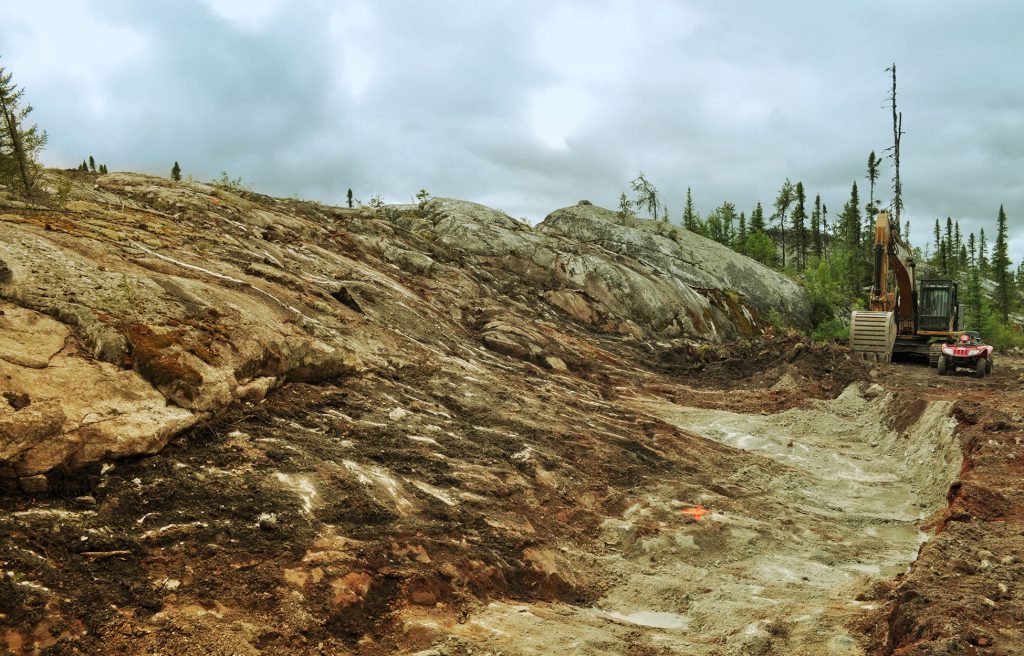Vision Lithium samples 1.0 metre of 4.8% Li2O at Cadillac, Quebec

Vision Lithium Inc. [VLI-TSXV; ABEPF-OTCQB] reported initial high-grade lithium exploration results from its recently acquired Cadillac lithium property, including assays from surface channel sampling and completion of two geophysical surveys. The property comprises a total of 320 claims covering 18,378 hectares (184 km2) located just 10 km south of the historic mining town of Cadillac, and about halfway between the major mining centres of Rouyn-Noranda and Val d’Or, Quebec.
The Cadillac lithium property hosts at least four known spodumene-bearing pegmatite dikes spaced approximately 100 metres apart and traced for at least 300 metres east-west along strike. Spodumene is the hard rock mineral of lithium. Since acquisition, the company has acquired permits for access trails prep, outcrop clearing and sampling, and a minimum-1,500-metre drill program. The Cadillac lithium occurrence has never been drilled.
The company sampled and assayed 21 separate short channel samples across the main outcropping B dike over a strike length of 300 metres. Results received for 15 channels over 65 metres strike length at western end of outcrops. Ten of 29 samples assayed were above 1% Li2O with a high of 4.80% Li2O over one metre.
A high-resolution airborne MAG survey has been completed over more than half the property. Combining the results of the survey with an existing adjacent HiRes survey. review and interpretation are continuing at this time.
Vision Lithium acquired recent government LiDAR data for the entire property and completed a reinterpretation of the data at higher resolutions in order to define and refine potential pegmatite targets for future exploration. The LiDAR report identified over 400 potential pegmatite targets for ground proofing next summer.
Yves Rougerie, president and CEO, commented: “These first assay results confirm the widespread occurrence of spodumene along 65 metres of the most western section of the B dike with high grades of 3.98% and 3.93% at the extremity of the outcrop where the dike disappears under cover. Another 235 metres of B dike to the east was channel sampled as well and results for these are expected in January, 2022. Based on these early results, we can see the strong potential of the cluster of dikes in this area of the property. Spodumene has been observed in all the outcropping dikes and we also believe there are likely more dikes in the cluster. Drilling will begin in January to initially test the B dike over its 300 metres exposed length. We plan to aggressively explore the property over the winter by drilling the main cluster of dikes and are planning for an exhaustive field exploration season next summer over our very large tract of land.”
